As a child, the most terrifying news you can hear from your elders at home is: "I have a once-in-a-lifetime opportunity to get rich."
Especially when the elder asks you, "Have you heard of Pi coin?", it indicates that everything that follows will speed uncontrollably in a bad direction.

Most young people’s initial understanding of Pi coin comes from the scattered keywords spoken by their elders:
Virtual currency, mobile mining, can earn huge wealth.
The frenzied narrative of getting rich from parents sounds like bad news to most children. When fearful children search online, they find that Pi coin has been questioned by many countries for being too similar to pyramid schemes and scams. As early as 2023, the online public security in Wuxi had stated:
The Pi coin scam specifically targets the elderly.
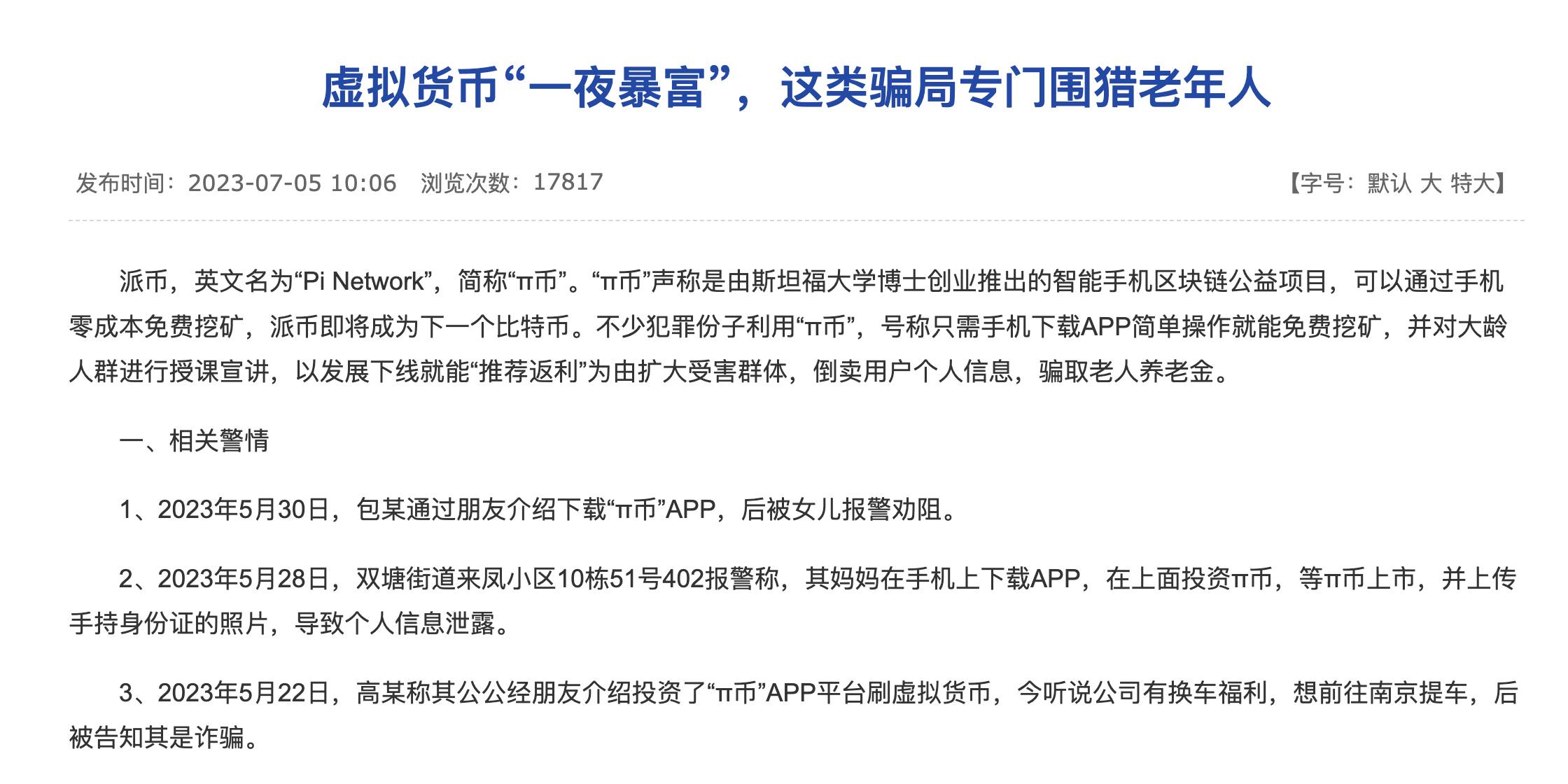
Pi coin, precisely targeting the elderly?
Before understanding what Pi coin is, people often start by understanding their parents.
Watching them travel to distant places, performing a money-grabbing dance in front of a stone in a manner similar to a ritual to seek wealth;

Or wearing matching outfits, meeting peers in similar attire in the lobby of a five-star hotel in the suburbs of a first-tier city, in a manner resembling a corporate team-building event;

Or moving activities outdoors to parks, sitting on the ground in a handkerchief-style formation, and arranging for everyone to showcase a talent performance…

From the form and content alone, these are all ordinary activities for the elderly.
But with a little understanding of the details, you will feel that something is not quite right.

You can't help but ask them what they have been busy with lately, and they mysteriously reveal:
Recently, we have been mining Pi coin.
Before clarifying why middle-aged and elderly people are crazy about Pi coin, we first need to understand:
What exactly is Pi coin?
In simple terms, it is a type of virtual currency. Pi coin, fully named Pi Network, is also known by various names in the market, including "π coin" and "Pionex coin."
To some extent, you can understand it as a "middle-aged and elderly version of Bitcoin" that has been packaged.
The biggest difference is that Pi coin has not yet been listed on most mainstream exchanges, its price is extremely unstable, and its future value is influenced by market sentiment, supply, and demand. Currently, Pi can only be used within the closed ecosystem of Pi Network and cannot be redeemed for any economic value in external markets.
In other words: it cannot be traded like Bitcoin, nor can it be exchanged for RMB or USD.
When searching for Pi coin on social media, common warning phrases include:
The Pi coin you bought is just "air coin futures," and if the exchange shuts down, your account will go to zero.
If you want to understand the potential risks of Pi coin in a more direct way, you will see:
In a 2023 report by CCTV, Pi coin was questioned by the police for having fraudulent attributes.

But the same thing, when viewed from the perspective of the elderly, becomes a completely different story.
From the perspective of middle-aged and elderly people:
Pi coin is the only opportunity to get rich in old age, a new era treasure book for wealth that has been lost among the people.
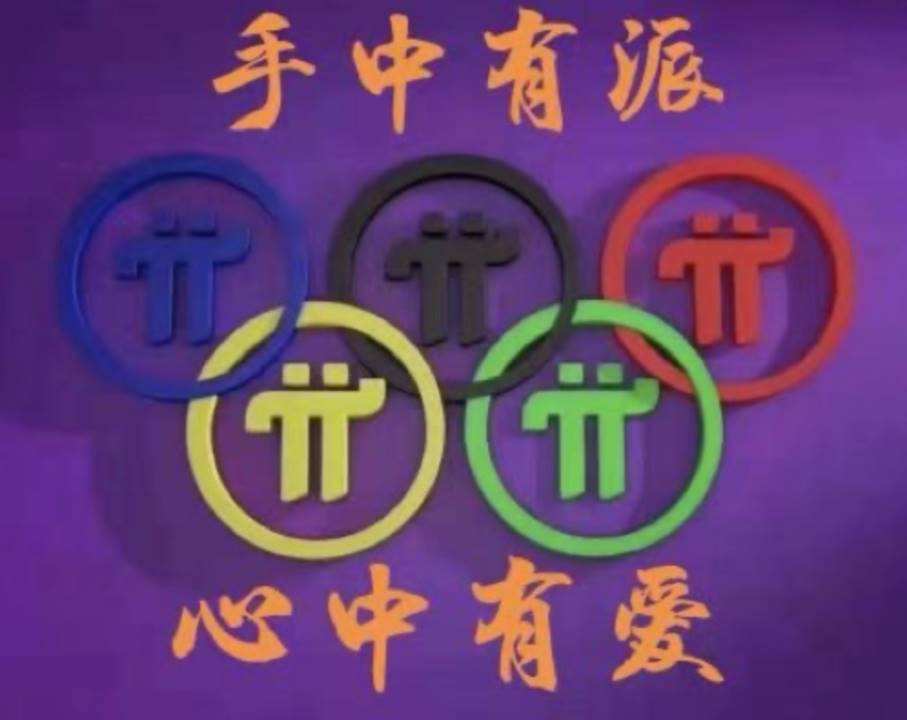
Most middle-aged and elderly people who enter the Pi coin circle as Pionex friends have a common characteristic:
They have plenty of time but nothing to do.
Over time, this idle time becomes a torment.
By chance, a familiar person may come to them as a guide to wealth. The pitch is roughly as follows:
"Since you're doing nothing, do you want to find something easy to do? No investment, just play with your phone and you can earn big money."
Initially, these people may be pulled into a "Pionex coin group chat" by old friends, former colleagues, or relatives, where there is usually one or more experienced teachers who subtly convey:
"Pionex coin is very valuable now,"
"There are many places abroad where you can spend Pi coin directly,"
"1 Pi = 2000 USD," and similar messages…
When they first join the group, everyone is filled with skepticism about Pi coin.
But the first person saying Pi coin is valuable may not be convincing, the second person saying Pi coin can now buy a Mercedes raises doubts;
Then the third Pionex friend in the group says they are preparing to go to Macau to pick up a car with Pi coin, which starts to pique interest.

Good news keeps coming in the group, mixed with news reports that are hard to distinguish between true and false, and all 100 people in the group are shouting that Pi coin is valuable and will continue to appreciate in the future.
Some claim that friends in the group who have settled abroad casually share snippets of their lives to tell everyone:
Pi coin has real value and purchasing power across the sea, even Trump spends Pi coin to buy private jets.
When the day comes that it can be exchanged domestically, each group member will be rich enough to rival nations.
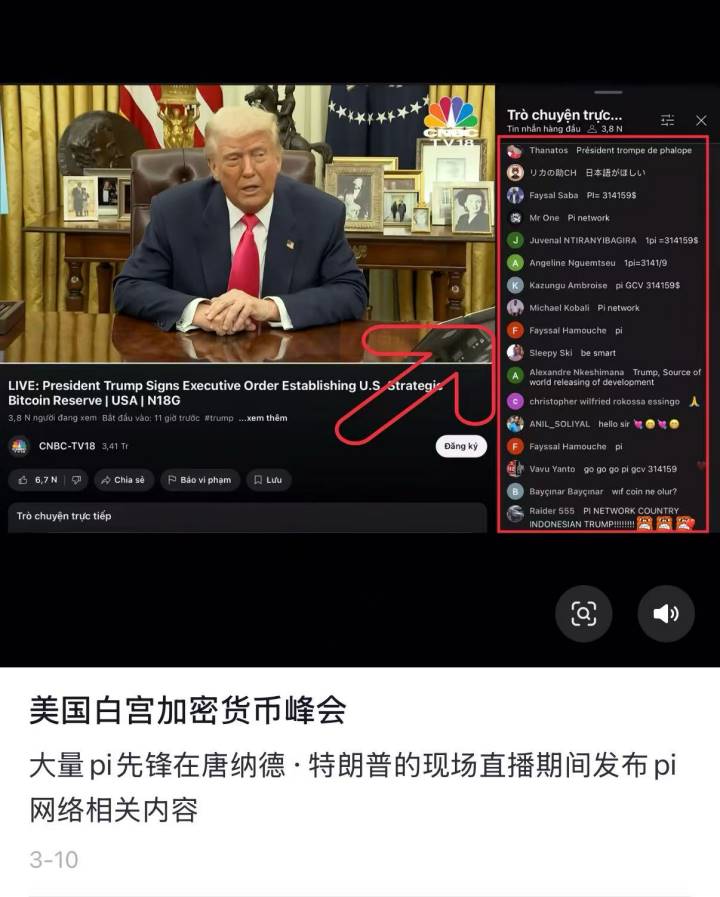
Even though this information sounds absurd to you and me, the elderly are notoriously gullible to all outrageous information, except when it comes to their children.
They believe that messages on Apple phones are delayed because Americans have to see them first;
They believe what various "experts" say, that drinking bottled mineral water can lead to infertility.
Looking at it this way, it’s not surprising that the same group of people, through the vast information in the Pionex friend group, firmly believe that they can get rich by mining with their phones.
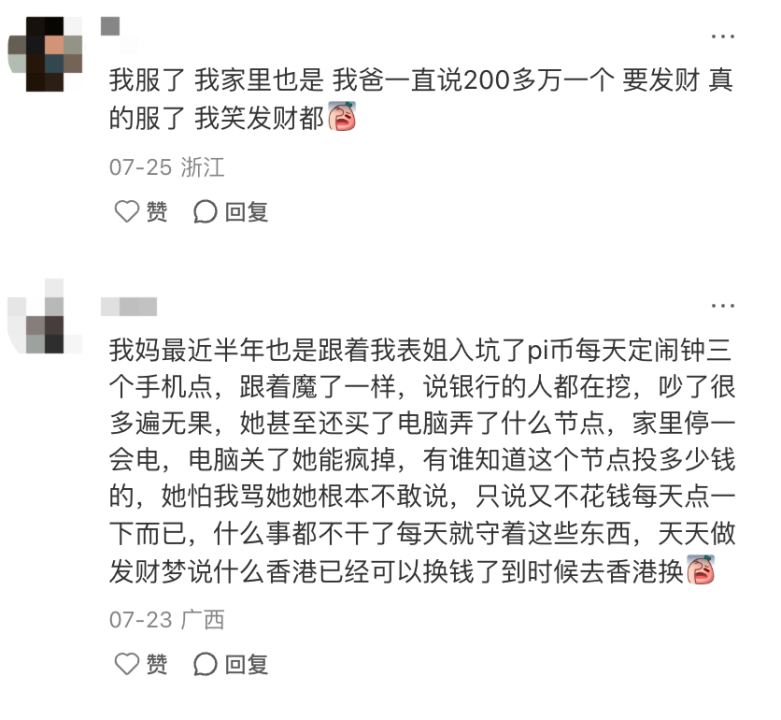
The belief that "Pi coin can make you rich" has been successfully planted, after all, the initial mining doesn’t require spending money, and all that is needed daily is to tap the phone with their little hands.
The rest is just to do their part and wait for the day when Pi coin can be exchanged for cash.
The longer it goes on, the closer Pi coin becomes to a no-risk, high-reward potential stock in the minds of the elderly, with many even preparing to set up several phones to mine day and night.
In such an atmosphere, it doesn’t take long to influence a new elderly Pionex friend, completing the first round of brainwashing.
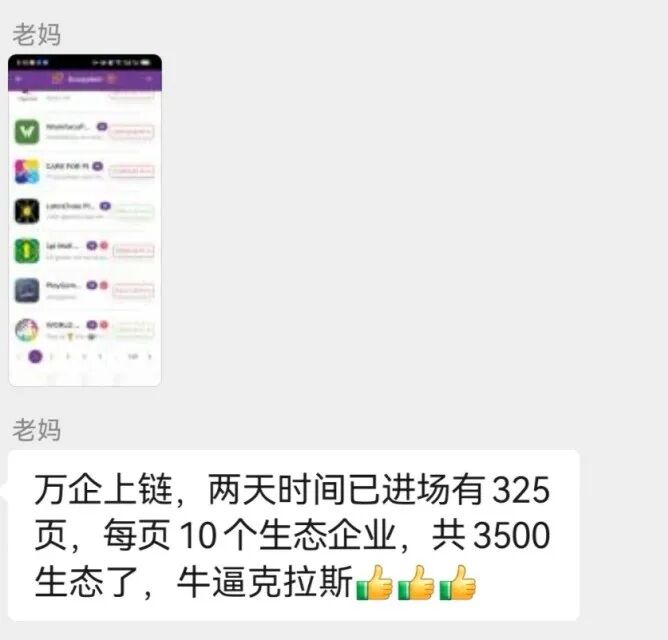
Due to the numerous and chaotic group chats and clubs in various regions, there has always been no consensus on how much one Pi coin is worth.
According to various unreliable sources, some say one Pi is worth millions or even tens of millions of dollars, while others say one Pi can buy a villa by the sea.
The extreme confusion of information gradually drives the elderly to learn about Pi coin and attempt to verify it themselves.
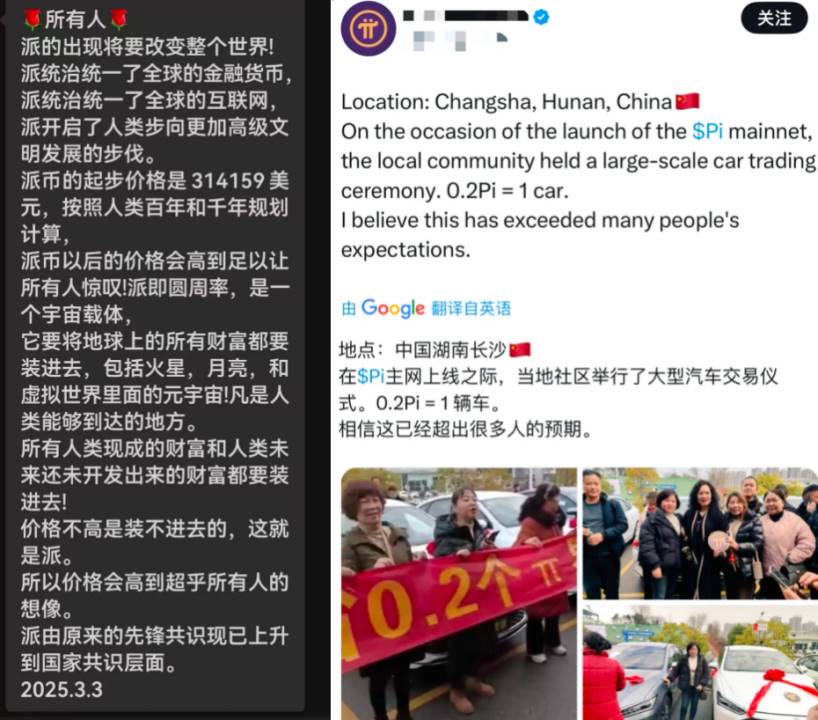
Moderately addicted Pionex friends begin to wear reading glasses to attend classes, take notes, study financial knowledge, and research what "blockchain," "ecosystem," "trading," and "empowerment" mean.
The process of learning how to mine faster, upgrade computing power, and obtain more Pi coins is equivalent to a second explosion of knowledge in the lives of the elderly.
Throughout their long self-study journey over the years, they have completed a second round of self-brainwashing.
How does Pi coin drain the elderly?
The next step in understanding Pi coin is to start spending money on it.
Before figuring out where the money has gone, we first need to understand the series of operational processes involved in mining Pi.
This is also the main basis for it being labeled as a pyramid scheme and scam.
Mining on a mobile phone is not difficult; it is something that many elderly people can understand, and it is not overly complex.
All you need to do is log into a fixed app every day, tap the screen to gain so-called "computing power," the more computing power you have, the faster you mine, and the more Pi coins you can see in the app. The Pi coins obtained through mining accumulate in the mobile app, and that’s all there is to it.
Checking in, watching ads, and inviting others are the main ways to accelerate computing power.
Inviting others to mine doubles your own computing power, which explains why Pi coin spreads so rapidly among the elderly.
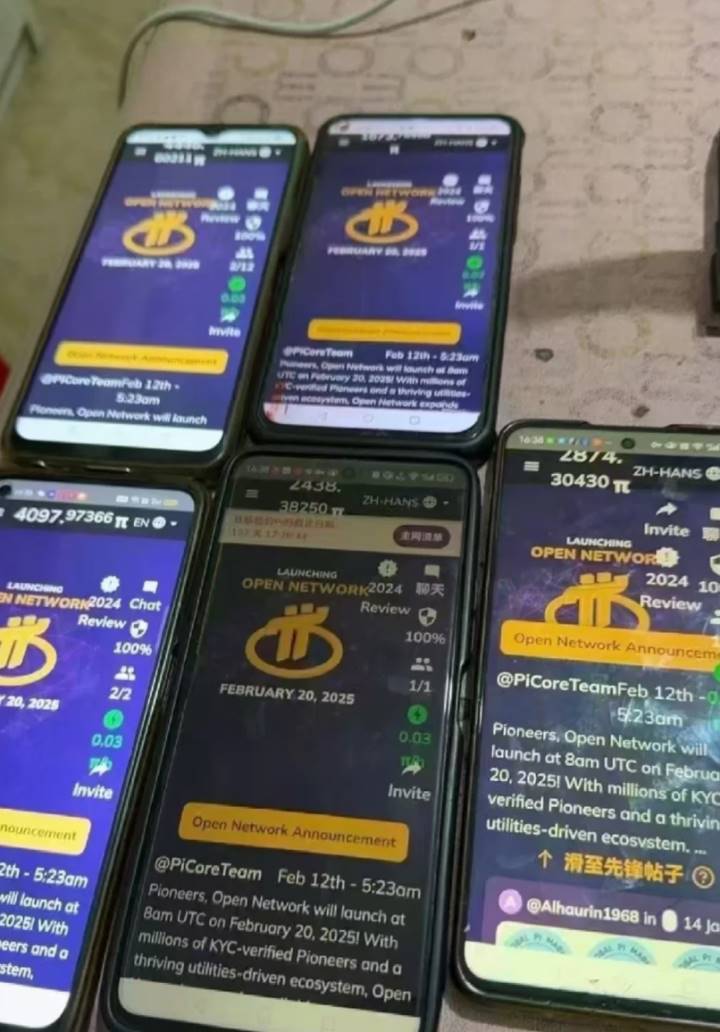
Mining indeed doesn’t require spending money, but that doesn’t mean the ancillary industries of Pi coin don’t require it.
At this point, anyone who has played puzzle games can understand:
Computing power is akin to stamina, diamonds, or coins in a game.
Although it can be played for free, the longer you play, the more you inevitably step on the designed nodes and gradually spend money.
Some elderly Pionex friends, in order to obtain more Pi coins and accelerate their computing power, will buy nodes from "insiders" as accelerators, quickly burning through a family's savings and retirement funds.
Moreover, computing power is not the only means of draining retirement funds.
In the corners of small cities where the elderly gather the most, there are batches of mysterious "Pionex friend" clubs that usually organize gatherings and control most of the Pionex friends in the city as "potential customers."
Whenever there is a software upgrade, or when the software interface keeps showing a loading circle, or when various issues arise that the elderly cannot understand, they can go to the club for help with upgrades and basic problem-solving, which can charge anywhere from dozens to thousands of dollars.
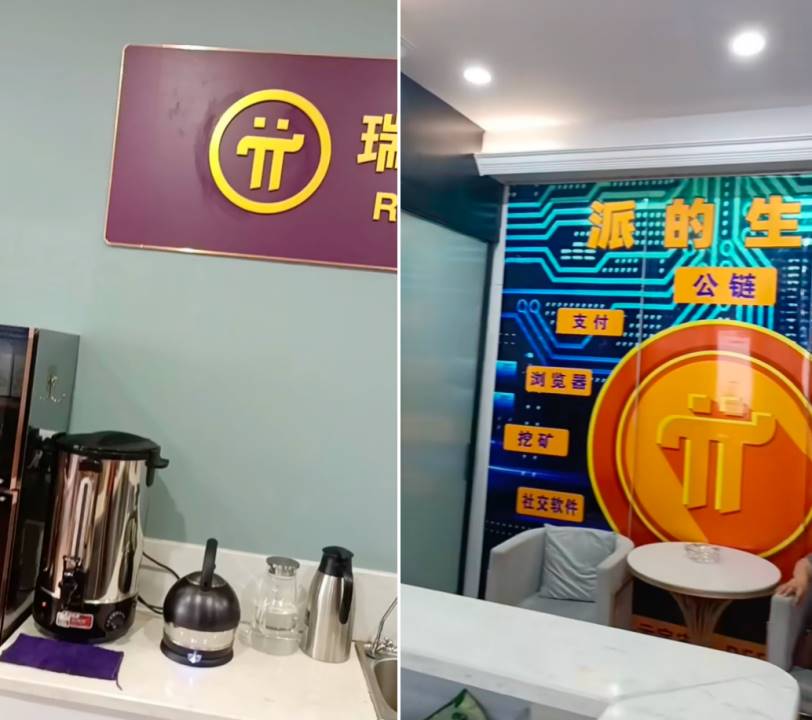
There are even more middle-aged and elderly people who have fallen into the trap, harboring an urgent desire to get rich, diving into a world of wealth they barely understand, daily interacting with those in the group who claim to have "achieved financial freedom," feeling that they know far too little.
Self-study can no longer satisfy their needs, and they begin to seek out successful teachers within the Pionex circle, enrolling in classes to learn.
The first self-improvement expenditure after retirement is to study how to obtain the key to wealth.
Tens of thousands of yuan for 10 online classes, and even the teachers are middle-aged and elderly, which in some ways makes them believe even more in the value of the courses.
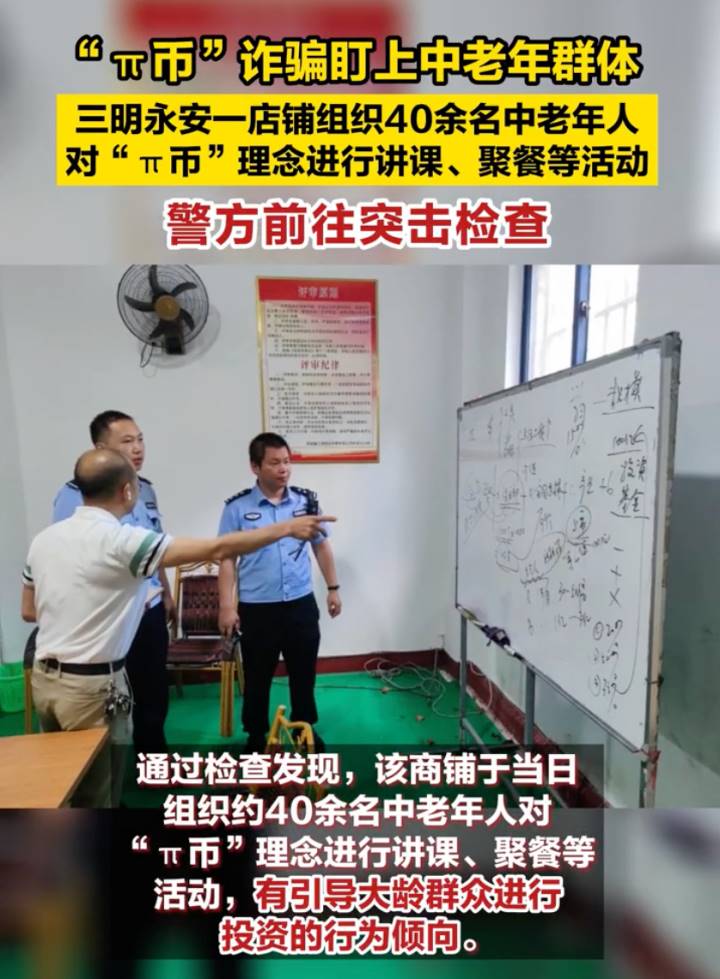
In the past, Pi coin was considered a niche circle, but it began to attract a large number of people’s attention when news spread that many middle-aged and elderly Pionex friends were going to Shandong to exchange Pi coins.
After all, the question of how much Pi coin is worth has always been the "elephant in the room" within the circle of middle-aged and elderly Pionex friends.
After being brainwashed for a long time with the exchange formula "0.2 Pi = a Passat," Pionex friends also see news that Pi coin is only worth five bowls of jjajangmyeon in South Korea, often leaving them feeling confused.
So when they hear that there are places in the country where Pi coins can be exchanged, no one can stop the Pionex friends from setting off.
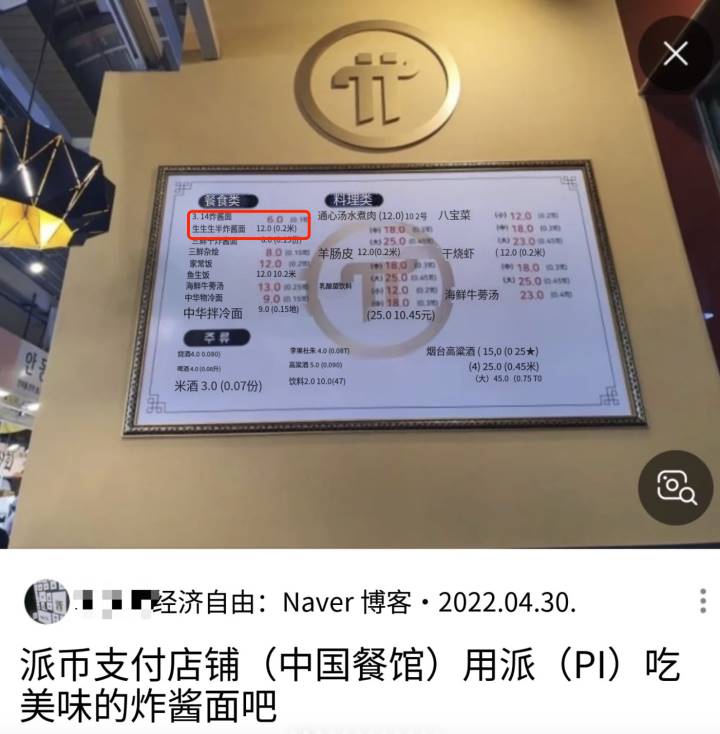
Hearing from local contacts that upon arrival, they must first sign a confidentiality agreement and cannot use their phones or communicate with the outside world, because someone might target this wealth that can control the world.
After going through a series of processes, the deceived elderly people ultimately find themselves trapped again without realizing it:
They are burdened with loans or online debts.
From then on, they become a true part of the criminal chain, returning home to continue mining with an unending dream of getting rich.
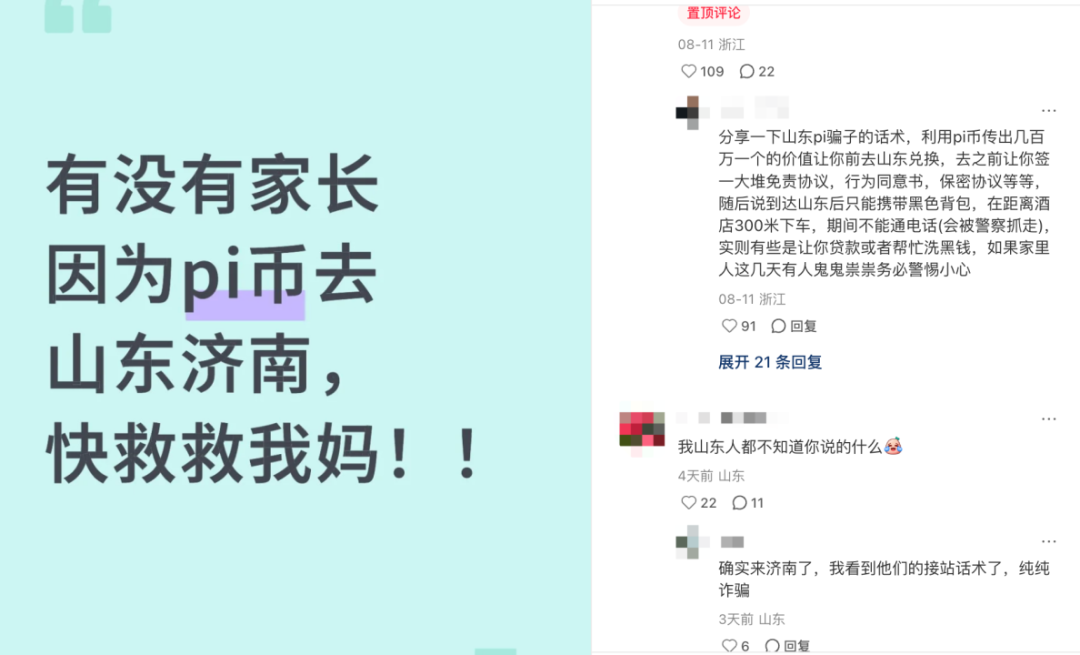
Whether it’s scamming money or deceiving people, whether it’s a lot or a little, it all seems like a familiar plot and ending to us.
Despite the authorities repeatedly issuing notifications warning that mining Pi coin carries risks, it frequently makes headlines in social news and is on the key list for anti-fraud campaigns.
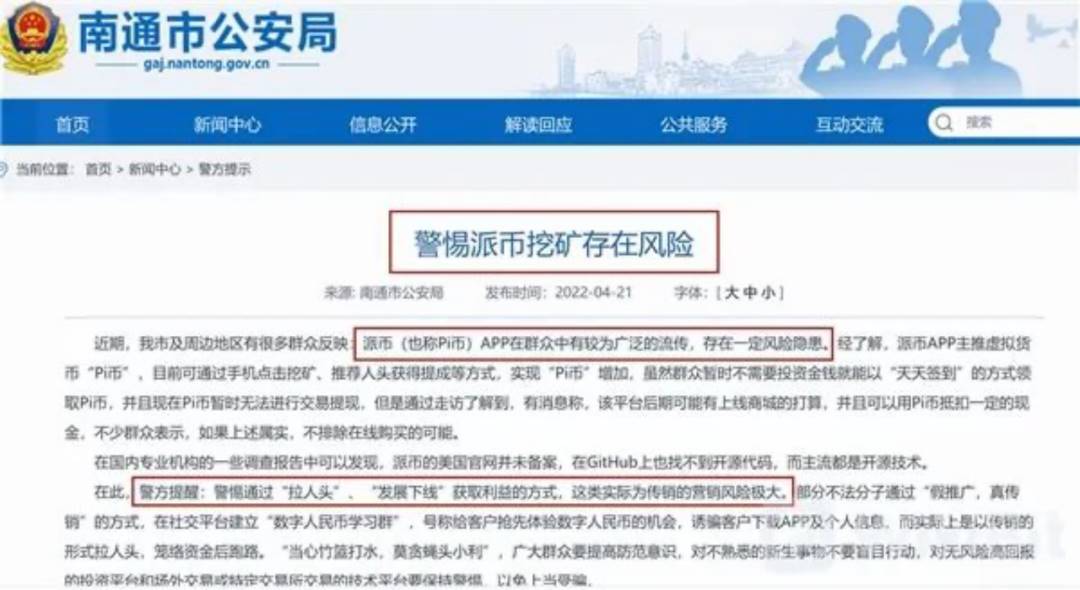
But nothing can stop middle-aged and elderly Pionex friends, who only believe what they want to believe.
Why does Pi coin target the elderly?
When the elderly at home start promoting Pi coin to their children, they have basically been bitten by the snake five times and have reached the fourth step.
When children learn that their parents are "playing with Pi coin," they also receive a request:
"You should start playing Pi coin too; I’ll guide you."
Countless personal experiences from children and younger generations on the internet prove that Pi coin will not make you rich overnight; it will only drive you insane.
If they had previously hidden from their children how much money they spent on mining Pi coin, it could be considered a sign of some remaining rationality.
But when they start pulling their children into the Pi coin circle, they truly do not know the world.
They completely believe in all of this, have accepted 100% brainwashing, and are even prepared to "benefit their children."
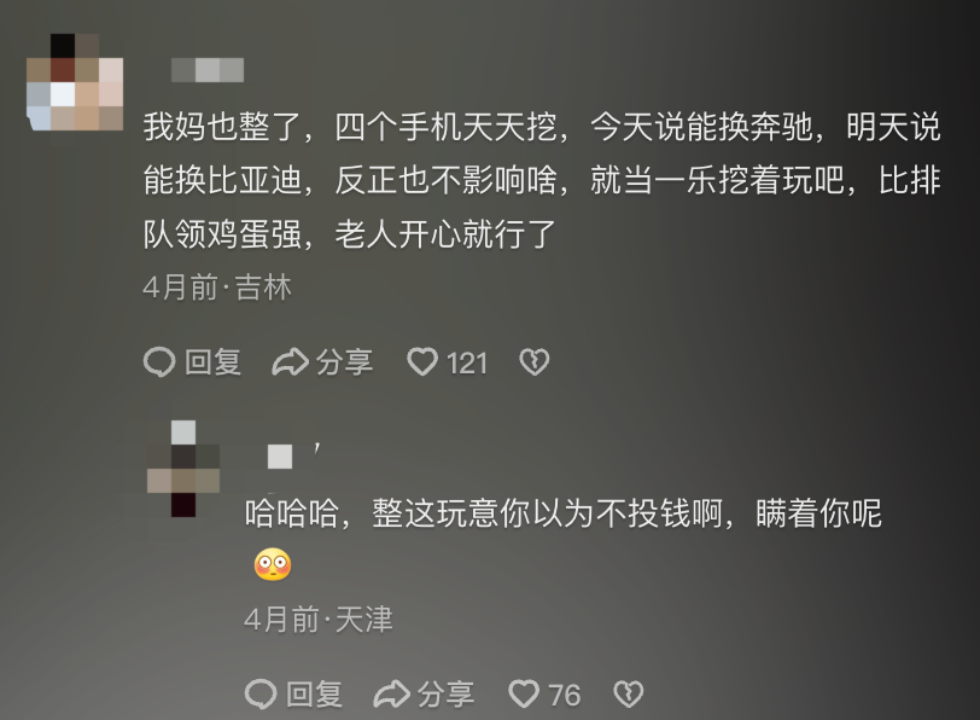
Even when persuading those around them to mine Pi coin, Pionex friends use very similar persuasive language:
"Look down on the few hard-earned money you make in a year;"
"Disdain you for not believing in Pi coin;"
"Don’t understand how such a wise and powerful person like me could raise such a cognitively low and financially illiterate fool"…
Years of parent-child relationships, transformed by Pi coin, have turned into a simple model of recruiting downlines.
At this point, it can be seen that Pi coin itself carries a strong nature of a pyramid scheme.
This is also one of the reasons why Pi coin can become one of the most hidden and deceptive scams.

The exclusivity, circular reasoning, promises of benefits, and repetitiveness of Pi coin, combined with symbolism, essentially create a brainwashing textbook.
Through invitation and sharing, it aligns with the structure of pyramid schemes recruiting downlines.
The difference is that the first step of a pyramid scheme is brainwashing, recruiting, and most importantly: investing money.
Pi coin starts with zero investment, pure brainwashing, and after Pionex friends spend a lot of time and energy, they are then induced to make a series of seemingly "voluntary" financial investments.
The insidious nature of this invisible scam lies in the fact that even when children learn that their elderly parents are mining Pi coin, they easily develop a sentiment of "let them go since it doesn’t cost money."
But from a theoretical standpoint, Pi coin is a form of pyramid scheme that slowly cooks the elderly.
By the time it is discovered, it is often too late.
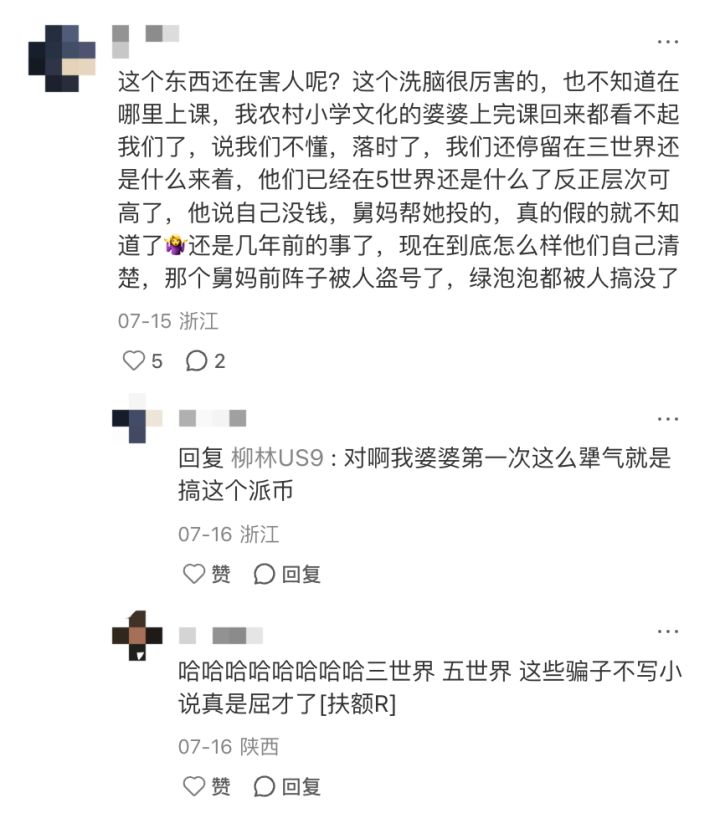
The most challenging aspect of anti-fraud campaigns regarding Pi coin is precisely based on this principle.
As a type of "air coin" that cannot be listed on the main network, Pi coin itself is not exactly a scam; to put it bluntly, their main profit method is to attract more people to view ads and earn advertising revenue.
Because of this, Pi coin has also become a dream factory that accommodates a large number of scams.
Using a montage of half-true and half-false lies, after step-by-step brainwashing, it empties the wallets of Pionex friends.
So even today, elderly people who have been scammed still believe that "someone is doing bad things under the name of Pi coin, but this has nothing to do with Pi coin; I can still get rich."
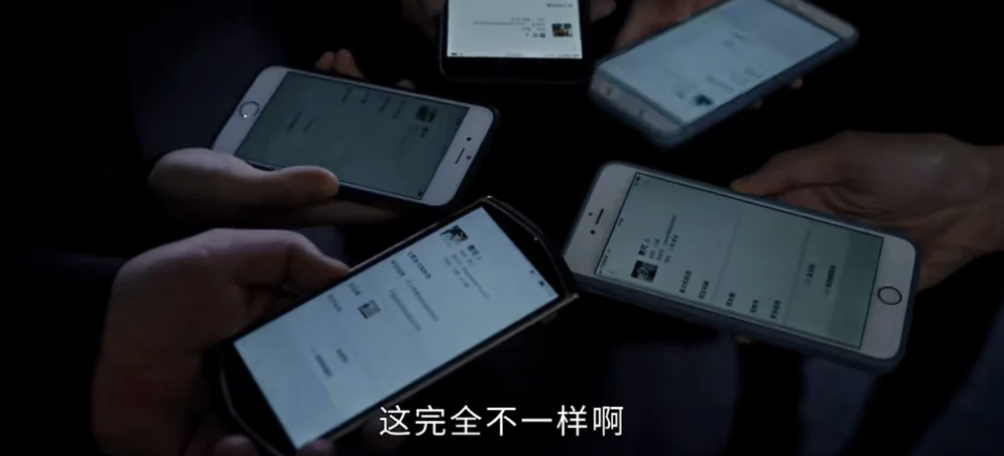
From the very beginning, various scams have already reached a self-consistent logical chain on the issue of "Pi coin is real, but its value is fake."
Anyone who says Pi coin is worthless is simply low in cognition; authoritative figures who do not support Pi coin are afraid that ordinary Pionex friends will share in the wealth pie.
Those who dare to directly go offline to exchange Pi coin care little about the risks of privacy leakage.
A classic and brutal truth about scams is that there are always people who believe they are inherently smarter than others.
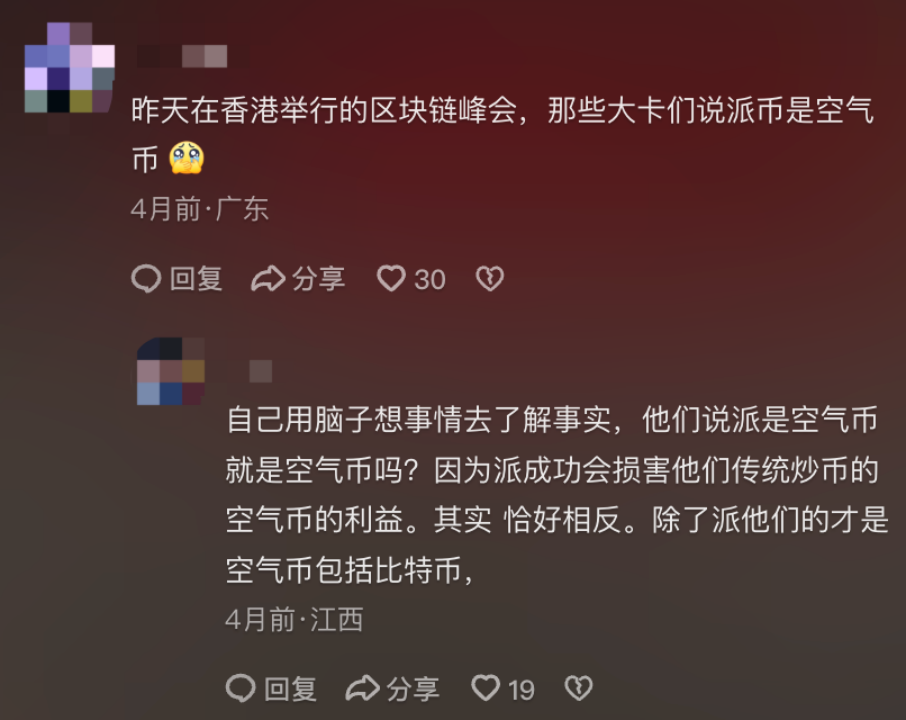
Every time you delve into a scam, you can notice some familiar plot points.
In reality, all scams revolve around a few common templates.
From the early "original stock" scams to health product miracle cures, the promises of getting rich overnight or living a long life have always been tools for harvesting the elderly.
Every scam targeting the elderly precisely exploits their unfamiliarity with new technologies and their anxiety about wealth in their later years.
Scams in the internet age are a refined upgrade of the same framework.

Rewind a few years, and the entrepreneurial pitches back then were much more obvious than they are now.
In the past, the focus of entrepreneurship and wealth was "easily making a fortune" and "small initial investment with large returns later," while now it is "daily mining with your phone, a bit of hard work but can get rich."
The former was overly optimistic, while the latter is relatively closer to reality, giving a tangible feeling.
Moreover, the internet's claim that "Pi coin is created by a Stanford team" serves as a stamp of approval for middle-aged and elderly people who strongly believe in meritocracy, making Pi coin seem promising.
Additionally, the operation process of Pi coin emphasizes diligent learning, actively participating in community "hard work," which is bound to attract the generation that values hard work for wealth.
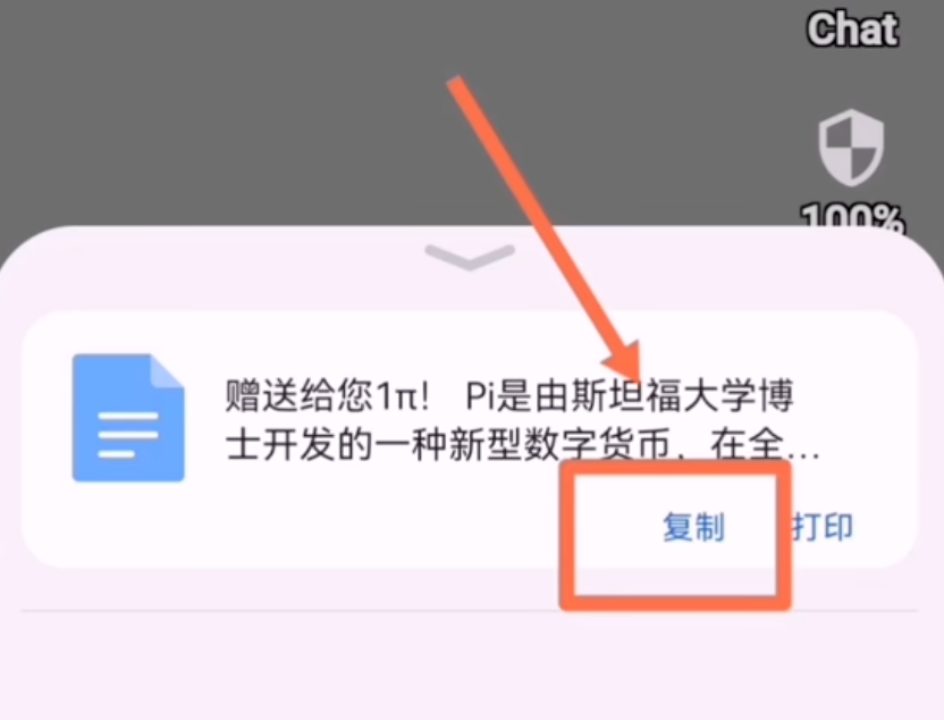
The trap of Pi coin does not simply exploit greed; instead, it uses a potential windfall to exploit the anxiety of the elderly regarding the recognition of "labor value," fearing that they will miss the wealth train at the end of their lives, thus gradually increasing their sunk costs in terms of time, energy, and money.
How to rescue the elderly from the Pi circle is a long-term topic.
Raising awareness of fraud prevention, parental supervision, and attempting to establish effective communication are not enough to build an impenetrable firewall against scams. After all, for middle-aged and elderly people who are dreaming of getting rich, anyone who tries to dissuade them becomes the biggest stumbling block on their path to wealth.
For children, the first lesson in preventing the family from going bankrupt can only start with understanding what Pi coin is and increasing sensitivity to supervision.
When you go home today, check if there is a Pi coin app on your elder's phone.
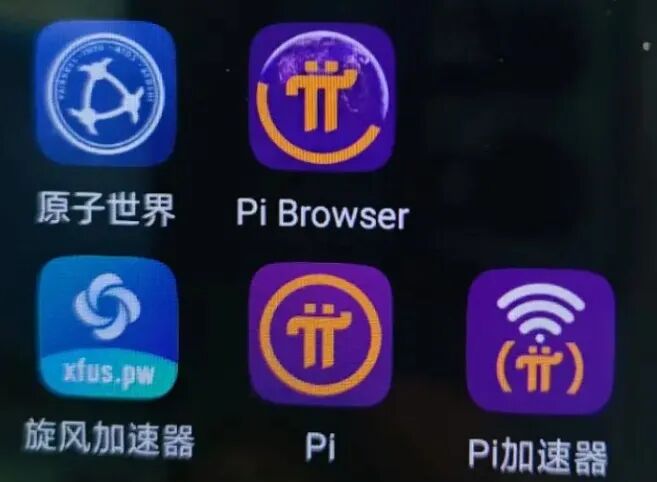
免责声明:本文章仅代表作者个人观点,不代表本平台的立场和观点。本文章仅供信息分享,不构成对任何人的任何投资建议。用户与作者之间的任何争议,与本平台无关。如网页中刊载的文章或图片涉及侵权,请提供相关的权利证明和身份证明发送邮件到support@aicoin.com,本平台相关工作人员将会进行核查。




